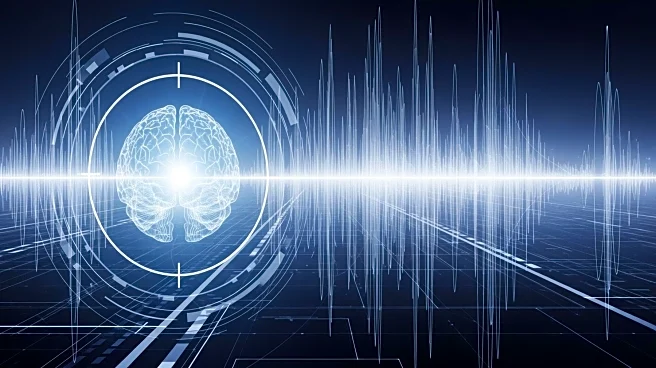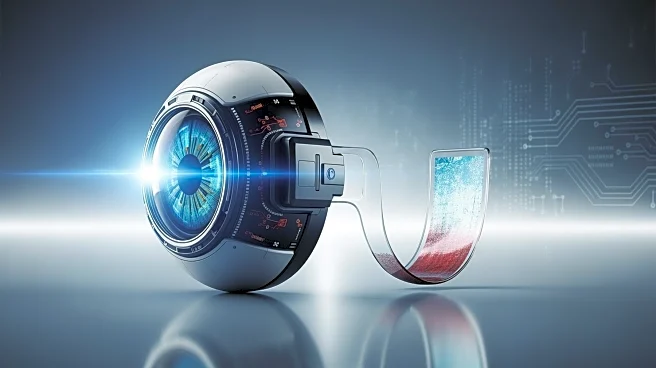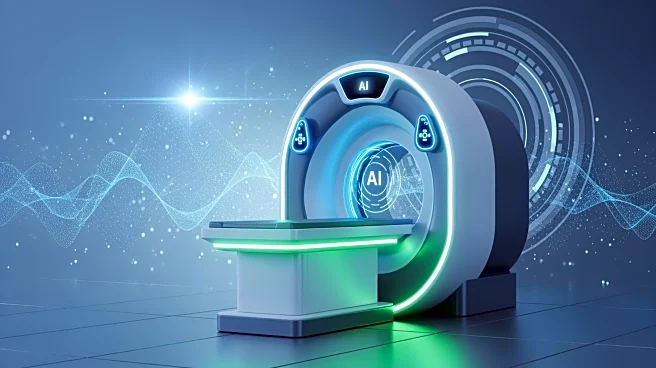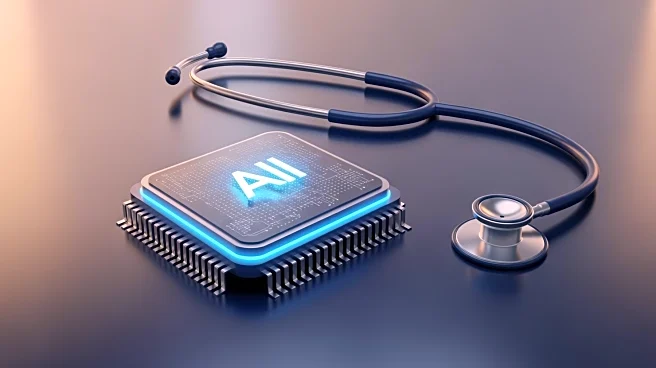What's Happening?
Recent research has focused on the development and evaluation of acoustic holograms for precise spatial targeting within the brain. The study tested various focal sizes and bifocal acoustic lenses using
planar and naturally focused transducers. The aim was to assess the accuracy and robustness of these holograms in creating targeted pressure distributions. The research demonstrated that holograms could successfully focus ultrasound energy at specific points within the brain, overcoming challenges posed by the skull's inhomogeneities. The study found that bifocal lenses could achieve distinct focal points, with the accuracy of the holograms confirmed through experimental pressure maps. The findings suggest that acoustic holograms have potential applications in clinical settings, offering a method to induce bioeffects over multiple points or large volumes simultaneously.
Why It's Important?
The development of acoustic holograms for brain targeting is significant as it opens new possibilities for non-invasive medical treatments. By precisely focusing ultrasound energy, these holograms could be used to target specific areas of the brain for therapeutic purposes, potentially improving treatments for neurological conditions. The ability to overcome skull aberrations and achieve accurate focusing could lead to advancements in brain surgery and therapy, reducing the need for invasive procedures. This technology could benefit patients by providing safer and more effective treatment options, while also advancing the field of medical imaging and therapy.
What's Next?
Further research and development are needed to refine the technology and explore its full potential in clinical applications. Future studies may focus on optimizing transducer parameters and hologram designs to enhance accuracy and effectiveness. Clinical trials could be conducted to evaluate the safety and efficacy of acoustic holograms in treating neurological disorders. Additionally, collaboration with medical professionals and institutions could facilitate the integration of this technology into existing treatment protocols, potentially revolutionizing brain therapy and surgery.
Beyond the Headlines
The use of acoustic holograms in brain targeting raises ethical considerations regarding patient safety and consent. As the technology advances, regulatory frameworks may need to be established to ensure its safe application in clinical settings. The long-term implications of using focused ultrasound for brain treatments could also impact healthcare costs and accessibility, potentially making advanced therapies more widely available. Moreover, the development of this technology could stimulate further research into non-invasive medical treatments, influencing the future direction of healthcare innovation.











